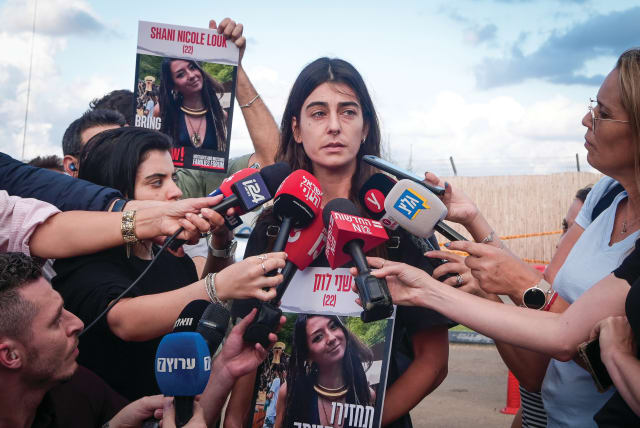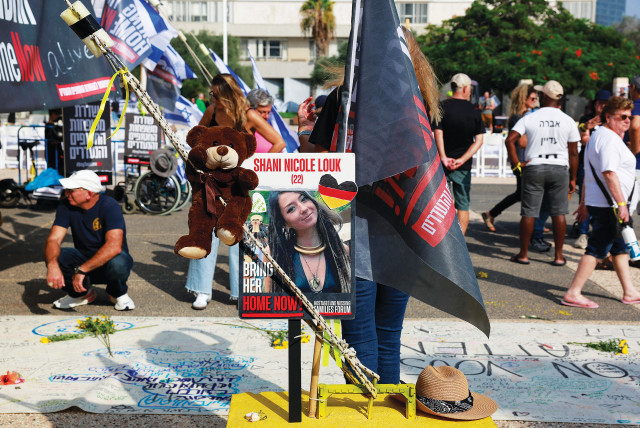Don't celebrate the sinful, unethical photographs of the Oct. 7 massacre - opinion

That these pictures – taken with the explicit or implicit support of Hamas – are being recognized for the glorification of the photographers is a stain on the memory of those murdered.
When I studied journalism in college, I had a professor who was supposed to be teaching us journalistic ethics. But everyone in the class heard the rumors that he was having an affair with a student, which made it hard to take what he was teaching us too seriously.
A quarter century later, I am the executive director and executive editor of an organization that highlights egregious violations of journalistic ethics and basic human decency, for the world to see and judge.
On November 8, when we at HonestReporting started asking questions about the photographers who covered the Oct. 7 massacre from very early that day, I could not have imagined that the worst offenders would win the top international awards in their field.
I sincerely believed that these people were going to be shunned by the civilized world for preferring their loyalty to the Hamas terrorist organization and the money they would receive from top media outlets over preventing the loss of life.
I was wrong.
Celebrating photographers of October 7
On April 12, two Gazan photographers will receive the prestigious George Polk Award for photojournalism at a luncheon sponsored by CBS in Manhattan. It was unclear whether Samar Abu Elouf and Yousef Masoud of The New York Times would be able to travel from Gaza to New York to receive the award from Long Island University.
Not to be outdone, the Donald W. Reynolds Journalism Institute at the University of Missouri School of Journalism awarded the Associated Press (AP) photography staff its Team Picture Story of the Year, highlighting freelance photographer Ali Mahmud’s disturbing photo of Israeli-German artist Shani Louk’s raped and murdered body being taken from the Supernova music festival to Gaza by terrorists.
While it justifiably caused an international uproar, this was not the only problematic photo to win an award from the institute. Its Judges’ Special Recognition award was given to a picture titled The Woman in the Black Dress taken by Amnon Gutman of a woman raped and murdered in front of her husband, who was also murdered after her.
“The spreadeagled, burned and heavily mutilated body of Israeli citizen, Gal Abdoush, 34, who Israeli police officials said they believe was raped, tortured, burned alive and then murdered by Hamas gunmen on Oct. 7, 2023, is pictured on Oct. 8 by her car on road 232, near Kibbutz Mefalsim, southern Israel,” the caption on the Pictures of the Year site says. “Abdoush’s husband Nagi, 35, was also murdered by Hamas militants on that day, leaving their two kids aged 7 and 10 orphaned.”
The necrophiliac preferences of the judges for pictures of raped and murdered women notwithstanding, the contrast between the two pictures is important to highlight. Mahmud crossed the border from Gaza and did not stop the terrorists on their murdering, raping, and kidnapping spree. Gutman came later and documented atrocities and did not display problematic journalistic ethics.
If these pictures were used to raise awareness about the hostages and bring them home, or the prize money was used to support those affected by Oct. 7, then there would be no problem with them winning awards. That these pictures – taken with the explicit or implicit support of a terrorist organization – are being recognized for the glorification of the photographers is a stain on the memory of those murdered.
That day, there were journalists who put their humanity first and saved lives, and they deserve to be honored – but don’t hold your breath.
It may get worse.
Six months after HonestReporting raised an uproar by asking questions about the photographers, the 2024 Pulitzer Prize winners and nominated finalists in journalism will be announced on May 6. The world’s top prizes for journalism will probably go to photographers who crossed both physical and ethical borders that day. If that happens, it will be an indictment of the ethics of international journalism as a whole, which unwittingly – and in some cases wittingly – played along with Hamas in this war.
THIS COLUMN noted last month that top journalist Ilana Dayan revealed how Hamas intended to use Gazan journalists as part of their plan – dubbed “Wall of Jericho” – to invade southern Israel, knowledge of which the IDF’s elite Intelligence Corps Unit 8200 obtained in the spring of 2022.
“The document is Hamas’s big plan for infiltrating Israel, point by point, exactly as it was later carried out,” Dayan reported on her top-rated TV show, Uvda.
“The plan includes everything in great detail, from how many Nukhba brigades would come, to how they would break through the barrier, and even those so-called reporters, who would join the brigades and broadcast the operation in real time.”
This week, the IDF published an English translation of the chilling interrogation of an Islamic Jihad spokesman, Tariq Salami Otha Abu Shlouf, revealing details of how terrorist organizations in the Gaza Strip manipulated the Arabic and international media, creating false narratives and lies. He admitted that the October 17 explosion in the al-Ahli Arab Hospital in Gaza City was caused by a PIJ rocket and that the organization chose to knowingly lie and blame Israel.
“[My] organization lied and fabricated a story about an Israeli rocket hitting a hospital at the start of the war,” Otha Abu Shlouf told Intelligence Unit 504.
The English transcript was given to the international media by the IDF, and it was – as one IDF spokesman put it – “aggressively ignored.” Two days after receipt of the transcript, Otha Abu Shlouf had not even been mentioned by Reuters or AP.
When Hamas released videos of Israeli hostages, the wire services shockingly said that they “couldn’t determine whether they were recorded under duress,” but they spread them around the world and parroted Hamas’s claims against Israel as gospel. Here, they did not even give their readers a chance to decide for themselves what to believe.
The media’s many mistakes and questionable ethics in covering this war have been making it harder for the usual pressure to emerge on world leaders to get Israel to end the war before its goals are achieved. In other Gaza wars, that pressure already started on day three.
In this one, it only really intensified six months in, when Israel made a genuine mistake. The airstrikes that killed seven humanitarian workers from World Central Kitchen (WCK) also struck a blow to Israel’s already tarnished reputation.
Unlike many blood libels proven false by HonestReporting during the current war, this time the reporting was not incorrect, at least until it turned out that Hamas drew Israel’s fire to the aid workers. When the bad news is true, it’s important to accept responsibility but remember that these tragic deaths are the exception that proves the rule: Israel minimizes and its enemies maximize harm to civilians.
Israel needs to show empathy but contrast its genuine remorse with Hamas’s joy when any innocents are killed, no matter who they are. And it must remind the world media that while this was an accident, the 1,200 Israelis murdered on Oct. 7 were killed on purpose.
No other country’s image is under such constant scrutiny. Applying different standards to Israel not demanded from other democracies is part of the IHRA definition of antisemitism.
When times are tough for Israel and its image is suffering, insisting on journalistic ethics is more essential than ever.
The writer is the executive director and executive editor of the pro-Israel media watchdog HonestReporting. He served as chief political correspondent and analyst of The Jerusalem Post for 24 years.
Jerusalem Post Store
`; document.getElementById("linkPremium").innerHTML = cont; var divWithLink = document.getElementById("premium-link"); if (divWithLink !== null && divWithLink !== 'undefined') { divWithLink.style.border = "solid 1px #cb0f3e"; divWithLink.style.textAlign = "center"; divWithLink.style.marginBottom = "15px"; divWithLink.style.marginTop = "15px"; divWithLink.style.width = "100%"; divWithLink.style.backgroundColor = "#122952"; divWithLink.style.color = "#ffffff"; divWithLink.style.lineHeight = "1.5"; } } (function (v, i) { });

